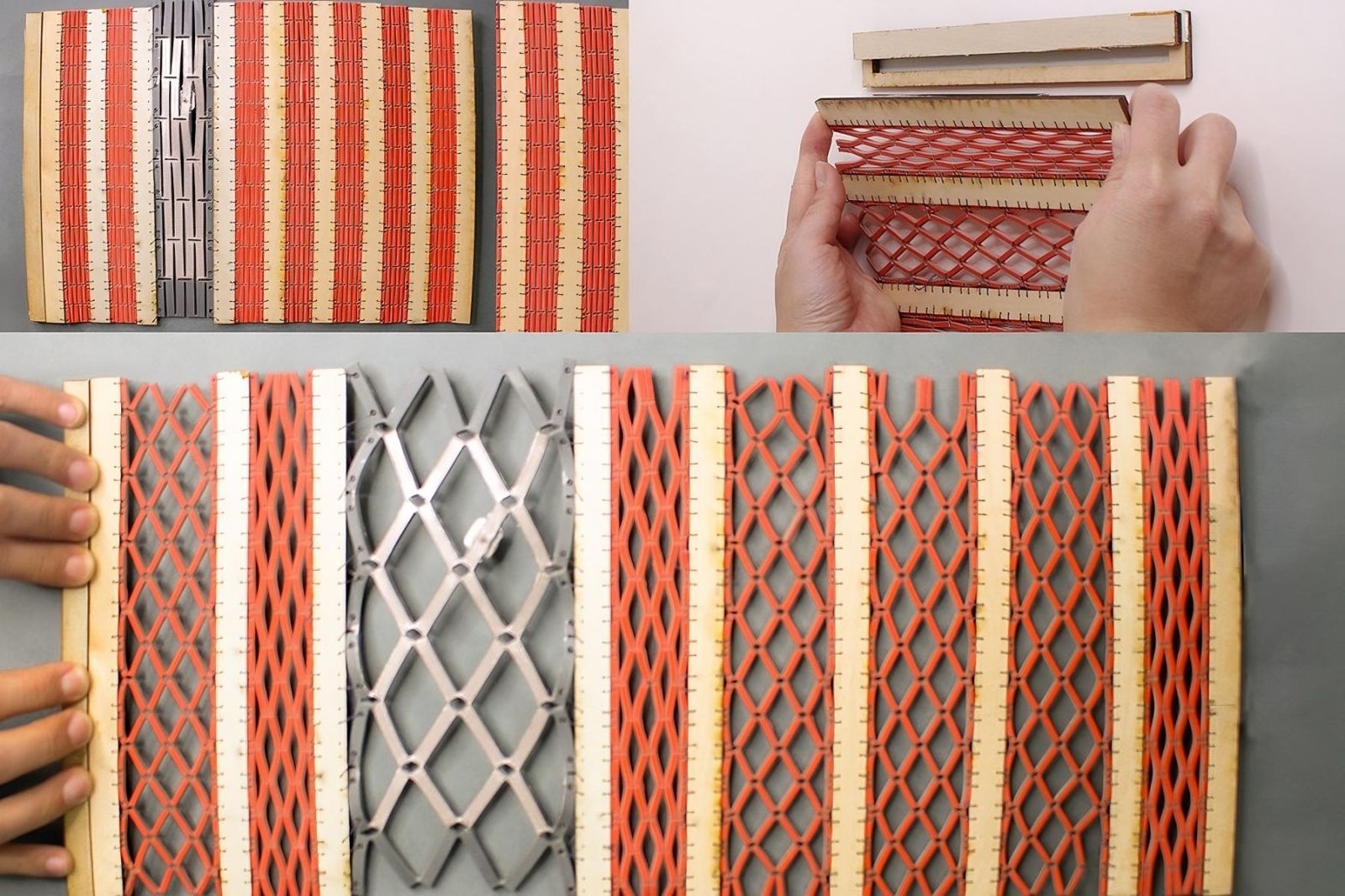Follow us on Google News (click on ☆)
Unlike the rigid metal rods of our good old routers, this innovation relies on an ingenious architecture. It uses "metamaterials"—structures whose properties come not from their composition, but from their carefully calculated geometric shape. By changing this shape, its function changes.

A meta-antenna (shiny mesh material) could be integrated into a curtain to dynamically adjust home lighting. Here, a prototype is shown retracted (top left), deployed (bottom), and next to the locking mechanism (top right).
The trick is to build the antenna like a sandwich. In the center, a layer of soft rubber. On each side, a thin conductive layer, applied with a special paint. The whole thing is laser-cut to create a structure that can twist, compress, or stretch without breaking.
An antenna that senses and listens
The benefit is twofold. First, this flexibility allows a single antenna to cover multiple frequency bands. A simple gesture is enough to switch it from 4G to Wi-Fi, for example, without needing multiple electronic components.
Second, and perhaps most surprisingly, this deformation becomes a source of information. By measuring the frequency change caused by stretching, the antenna turns into a sensor. It could, for example, be integrated into the fabric of a t-shirt to measure an athlete's breathing by detecting chest movements, or even be paired with a video game to capture the player's body movements.
The applications are vast. One can imagine a headset that switches from "noise cancellation" mode to "transparent conversation" mode just by slightly bending one of its arms. Researchers have successfully tested this.
Prototypes that herald the future
To make this technology accessible, the team also developed simplified design software. Any manufacturer could thus design its own custom antenna and produce it with a simple laser cutter.
Durability is not lacking either. Tests are clear: the prototype withstands more than 10,000 compressions without losing its properties. Essential robustness for integration into our everyday objects.
Tomorrow, these antennas could be woven directly into our smart clothing, or printed on all kinds of surfaces, from the inside of a car to the walls of a smart home, to interact discreetly with our environment.